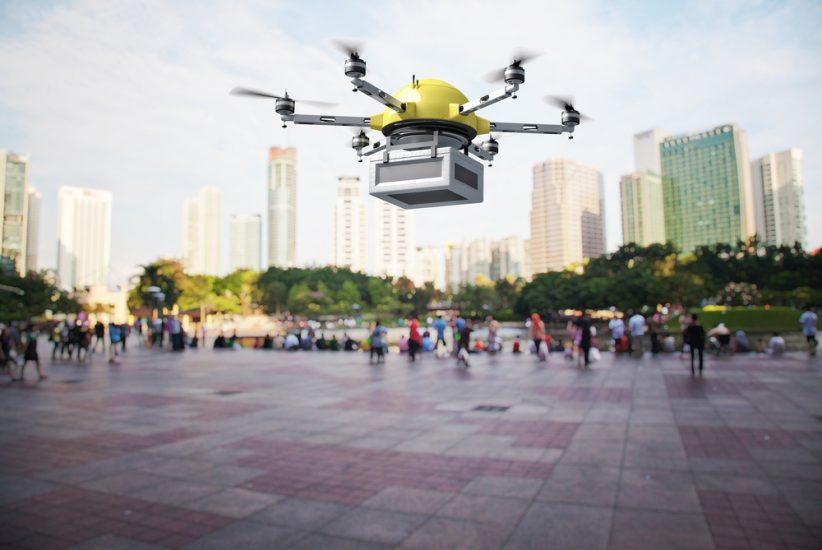Following joint activity by the Global Unmanned Traffic Management Association (GUTMA) and Global System for Mobile Communications (GSMA), new solutions are available to allow efficient data exchange between Mobile Network Operators (MNOs) and UTM ecosystems, says a report by Commercial Drone Professional. The report stems from a collaboration set up in 2019 called Aerial Connectivity Joint Activity (ACJA) and comprises several working groups promoting mutual understanding and interchange of data between the aviation and cellular communities.
A paper developed by the Working Task 2, “Interface for the Data Exchange between MNOs and the UTM ecosystem”, led Thomas Neubauer from TEOCO developed a reference document called “ACJA Network Coverage Service Definition v1.00”, which is free to download here.
In an article by Eszter Kovacs, Founder and CEO of Dronetalks, Commercial Drone Professional published the following summary:
The overall objective of the paper is to provide a minimum set of descriptions to standardise the way data can be exchanged between Mobile Network Operators (MNOs) and the Unmanned Traffic Management (UTM) ecosystems.
One of the main goals was to understand what real-time metrics or non-real-time and aggregated data (such as 3D/4D connectivity information, population density data or other performance-based metrics) can be provided by the MNOs in support of aviation operational evaluations and risk assessments.
For example, if a UAV operator wants to fly a Beyond Visual Line Of Sight (#BVLOS) mission, the connectivity situation in the flight area must be checked by the Operation Planning Service: unreliable cellular connectivity could pose a hazard to the feasibility of the flight.
“Providing a method for exchanging data between the communication service providers and the aviation ecosystems, which all relevant industry stakeholders have approved, is a critical milestone”, says Thomas Neubauer, Lead of ACJA WT-2 and VP Innovations at TEOCO. “To satisfy the regulatory requirements, e.g. to ensure that there is a ‘pilot-in-command, connectivity is a must-have. Without that, a UAV may be perceived as a ‘non-cooperative drone’, an unacceptable safety risk. Therefore, a UAV operator must know where there is sufficient connectivity in airspace and where is not. MNOs, on the other hand, have that information within their systems. They can provide service level agreements (SLAs) for that. With the Network Coverage Service Definition, both sides now have a globally harmonised interface that allows them to exchange that data, reliably and automatically for the different flight phases.”
But how does it work in reality?
During the planning phase of each mission, the operator prepares route options, considering the weather, airspace restrictions, aircraft performance, etc., in line with the operational limitations of their authorisation with the support of the UTM Operations Planning Service. Having completed this phase, the Network Coverage Service checked the selected routes for the availability of minimum service levels of connectivity as required by the Concept of Operations (e.g. continuous C2 availability). If requested, the Network Coverage Service can also propose alternate routes to assure the minimum service level of the connectivity.
For safety reasons, shortly before the flight commences, the Operation Planning Service may re-check that the connectivity service level requirements are still met (together with meteorology, NOTAMs, etc.). With all parameters in compliance with the approved ones, a clearance is then requested from Flight/Airspace Authorisation Service to commence the flight.
During the flight, the drone operator may have to re-plan portions of the flight in real-time, for example, to respond to a non-conformity from another drone in the area. These updates will require coordination using the Operation Planning Services with the assistance of the Network Coverage Service to stay on a route that meets the connectivity minimum service level.
Similarly, notifications from the communication network can be provided in real-time to the aviation systems if an unforeseen degradation happens to the connectivity along the flight path.
Sounds easy, right?
Unfortunately, at present, BVLOS flights using cellular Command and Control (C2) can only be conducted after performing a long and inefficient manual process to assess coverage. This process is further complicated by the current data-sharing limitations held by the MNOs. The challenge with data sharing is that none of the stakeholders is keen to share any critical data directly.
However, with the publication of the ACJA paper, a new paradigm for data exchange is emerging, and solid software solutions are becoming available on the market. One of these solutions, Airborne RF is already utilised by a range of MNOs worldwide. It is currently being deployed in the framework of the SESAR sponsored GOF2 Integrated Urban Airspace validation project.
The software is helping with the next step of airspace digitalisation by providing essential information on the availability of robust connectivity without the need for sensitive data sharing in the intended airspace of operations. AirborneRF is developed considering the ACJA standards, and it is fully integrated into the authorisation workflow. It delivers connectivity information to drone operators and air traffic management systems early in the flight planning phase for flight clearing and real-time during flight operations. No need for manual processes anymore.
For BVLOS operations to scale, it is necessary to integrate the automated exchange of connectivity data between MNOs and USS (UAS Service Supplier) in the flight authorisation workflow. This is probably the next significant step into developing a robust UTM system in support of the integration of drones into our everyday lives.
(Image: Shutterstock)
For more information visit:




